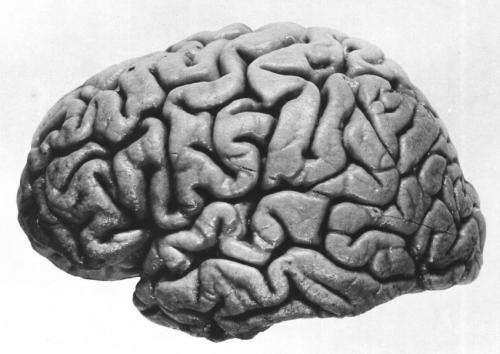What controls blood flow in the brain?

When neurons become active, they call for an extra boost of oxygenated blood—this change in the presence of blood in different regions of the brain is the basis for functional brain scans. However, what controls this increase or decrease in blood supply has been a long-standing debate.
In a paper published on June 25 in Neuron, Yale University scientists present the strongest evidence yet that smooth muscle cells surrounding blood vessels in the brain are the only cells capable of contracting to control blood vessel diameter and thus regulate blood flow. This basic anatomical understanding may also have important implications for phenomena observed in stroke and migraines.
Smooth muscle cells line the thicker blood vessels in the brain, while the branching capillaries are covered by a mysterious cell type called pericytes. Pericytes are not muscle cells or neurons, but they are found in large numbers in the brain and are thought to play a role in blood vessel formation. Previous studies have suggested that pericytes could contract to regulate blood flow in the smaller blood vessels, but the new Neuron paper contradicts this theory.
'We found that when neurons fire more actively (either during normal brain activity or events such as migraines) there is a response in small blood vessels that are covered by smooth muscle cells, but not those that are covered by pericytes,' says senior study author Jaime Grutzendler, director of Yale School of Medicine's Center for Experimental Neuroimaging.
His team, including co-lead authors Robert Hill, Lei Tong, and Peng Yuan, made these observations in mice using high-resolution optical imaging and optogenetics, an emerging laboratory tool that allows researchers to distinctly activate single cells. With these tools, they could map out the location and identity of the cells that were making use of a spring-like protein called actin to contract—which pericytes were never observed to do.
If capillaries do not regulate blood flow, then the next question is how individual neurons around the capillaries can request blood when they need to be active: 'While there is a local response, this response is not so local that a single capillary dilation/contraction will be triggered by the few adjacent neural cells surrounding it.' Grutzendler says. 'Our data supports the idea that flow control requires a certain threshold of cumulative neural activity within an area to trigger blood vessel dilation, which would then increase the flow to all its downstream capillary branches.'
He notes that if this is how blood vessels function, it could provide insight into the 'no reflow' phenomenon that occurs after stroke. Even after the blood clot or other blockage that causes a stroke is removed, blood does not start reflowing downstream to the tissue. The reason could be that abnormal constrictions in smooth muscle-covered blood vessels result in permanent vessel block in downstream vessels through formation of new clots and other mechanisms (see video). Grutzendler plans to explore therapeutic interventions that could help smooth muscle-covered blood vessels dilate on their own after stroke in hopes that it can limit the damage.
More information: Neuron, Hill, Tong & Yuan et al.: 'Regional Blood Flow in the Normal and Ischemic Brain Is Controlled by Arteriolar Smooth Muscle Cell Contractility and Not by Capillary Pericytes' www.cell.com/neuron/abstract/S0896-6273(15)00514-0



















